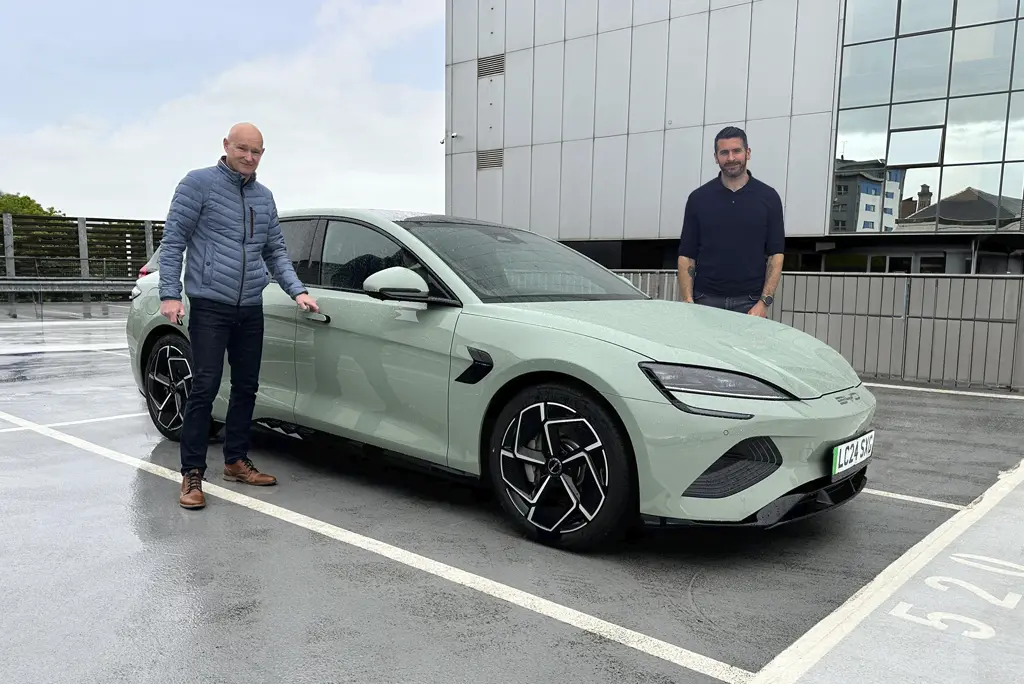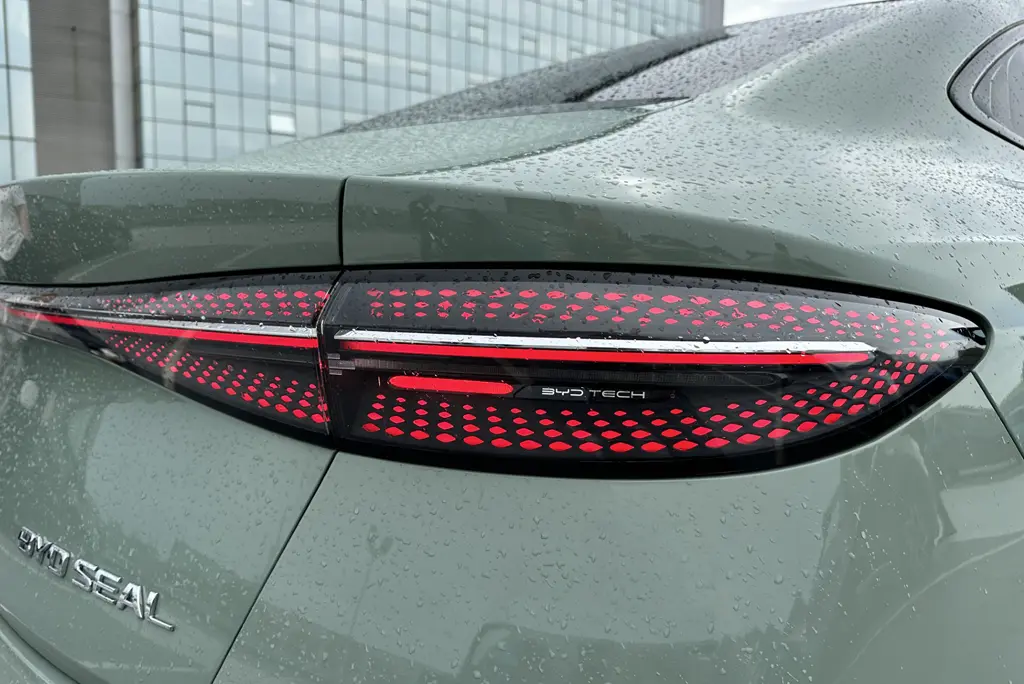S h a r e
BYD Seal review: Can it swim with the big fish?


Posted by
Kevin Blackmore
June 2024
The Tesla Model 3 has long been the go-to EV for those looking for an executive-level saloon with decent range. That might be about to change as Chinese automaker BYD (Build Your Dreams) attempts to upset the status quo with its oddly named competitor, the Seal.
The Fleet Alliance team recently experienced the Seal firsthand, with the aim of finding out if it’s a serious rival to the Model 3. Spoiler alert—it’s a serious contender if you can see past the name (and you should).
Background
Since UK drivers first started taking delivery of the Model 3 in 2019, it’s been a regular fixture on bestseller lists, and for good reason. But popularity aside, Tesla hasn’t worked hard to keep the formula fresh, and after five years, it’s starting to feel a little long in the tooth. Tesla tried to liven things up with a 2024 refresh, but disappointingly, the improvements feel more like a spec bump.
Beyond the slightly tired looks, the Model 3 is still a great car, but it’s beginning to feel like an elder statesman in the rapidly evolving EV market. Enter the BYD Seal.
Cryptically named for the model’s “ocean-inspired design” (whatever that means), the Seal forms part of BYD’s Ocean Family, which includes the smaller Dolphin hatchback.
Odd name aside, the Seal is a sure-fire winner when it comes to looks. It certainly has more character than the Model 3, with a low, aggressively styled bonnet sitting above an X-shaped front end that features stylish “double U-shaped” light clusters. Other attractive flourishes include sharply moulded swage lines, BYD-branded pop-out handles, and an attractive dot-matrix taillight unit. Compared to the Model 3, the Seal looks stylishly aggressive.
How it compares
Fleet Alliance Commercial Director David Blackmore commented: “The Seal has a sportier look and slightly more design features than the Model 3 all-round.” David’s thoughts on the exterior were echoed by SME Account Manager Damien Campbell, who said, “I personally prefer the look of the Seal. It’s sportier, and the build quality looks better”.
When it comes to the cabin, the Seal wins hands-down, too. For many, the Model 3’s interior is an acquired taste. The ultra-minimalist design certainly has its fans, but it can come off a little anaemic. The Seal, on the other hand, offers a sculpted interior with some much-welcomed character. Both cars offer a panoramic glass roof, but overall, the Seal manages to make the interior feel more accommodating and well-appointed.
David felt the cabin was of the same impressive quality as the exterior, commenting, “The Seal is sleek and stylish with a sporty look inside and out.“
In comparison to the Model 3’s bland dash and single fixed-orientation display, the Seal offers a more comprehensive outlook. Both cars share the same central tablet-style display, but the Seal lets the driver rotate the display vertically for extra practicality. Most importantly, though, the central display is augmented by a traditional binnacle-style instrument panel – a significant improvement on Tesla’s frankly ridiculous idea of placing the speedo (and the kitchen sink) in the main dash display.
Both David and Damien were impressed with the central display. Damien said: “The tech is really modern. Everything you would expect is available. The screen, in particular, is very impressive and responsive – as is the view through the reversing camera.” While David went on to say, “The Seal is packed full of tech, and the rotating display screen is a pretty cool feature. It’s also packed with all the necessary tech, from safety and driving assistance features to a state-of-the-art Dynaudio sound system and three driving modes.”

Specifications
The entry-level 2WD Design version starts at £45k, has a combined range of 354 miles, and accelerates from 0 to 62mph in 5.9 seconds. The top-of-the-range AWD Excellence version starts at £48k and has a higher-performance power unit, which does 0 to 62 mph in 3.8 seconds but reduces the combined range to 323 miles.
Meanwhile, the Model 3 comes in three specifications. The basic Real-Wheel Drive version starts at £39k and offers a stated range of 318 miles and a 0-60mph of 5.8 seconds, while the Long Range version starts at £49k and ups the range to 390 miles. The range-topping Performance All-Wheel Drive version starts at a hefty £59k, offers a 328-mile range, and an eye-watering 0-60 of 2.9 seconds.
Pricing
The Model 3 offers a lower entry cost, albeit with substantially less range than the entry-level Seal. However, the big differentiator is at the top end, where the Seal offers comparably blistering performance and equipment specifications for over £10k less. Throw in a more appealing aesthetic, and we think the Seal is a very worthy competitor.
Summarising general performance, David said “In Design trim, the Seal is a responsive and comfortable drive. Not as punchy as a BMW i4, but it performs very well overall. The reported range is much higher than the Rear-Wheel Drive Model 3, but longer testing is required to see how changes in temperature, etc. affect the actual range.”
Final Impressions
Our overall impression of the Seal was very positive. It’s miles better looking than the Model 3, offers equivalent levels of technology, and rewards the driver with a significantly more appealing interior. At the entry level, the Model 3 is cheaper, while the Seal provides greater range. However, at the top of the range, the Seal proves the better offering overall, with a package that’s on par with the Model 3 but for £10k less.
If you can see past the name then the BYD Seal should definitely be on your shortlist. In addition to the Model 3, we’d recommend the Seal alongside the likes of the BMW i4 and Polestar 2. That’s some seriously impressive company for a brand that didn’t even exist in the UK a year ago.
You also might like…
If you liked this article then check out our posts about similar topics
First Drive: Why Audi’s Q4 e-Tron matters
The Company Car Sweet Spot for future-proofing your Fleet An Audi badge says professional without drifting into show-of...
First Drive: Jaecoo 7 – Range-Rover Looks on a £30k Budget
Why this newcomer matters China’s Chery Group is taking the UK by storm with a two-brand strategy: Omoda targets mains...
Good-enough lease rates aren’t good enough anymore: Introducing Multi-Bid Tendering
In a climate of persistent inflation, unpredictable tariffs and relentless cost pressure, “we’ve always done it this...
Become a Fleet Alliance business partner
I am writing to you about the opportunity to become a business partner of Fleet Alliance The commercial arrangement a...
Charting a Greener Course: Chris Rowthorn signs the Business Wales Green Growth Pledge
When seasoned automotive finance professional Chris Rowthorn left MotoNovo after more than two decades to become a Flee...
Outsourcing Your Fleet: 10 Reasons Fleet Alliance Makes Perfect Sense for Busy Fleet Managers
Running a large corporate fleet means you’re under constant pressure to hit cost, compliance, and sustainability targe...
What makes Fleet Alliance a winner in the SME fleet sector?
We all like an award, an additional trophy for the cabinet - the recognition is important and it’s always good to rece...
10 great cars to have on salary sacrifice 2025
Employers and employees are really catching on to salary sacrifice because you can drive a brand new electric car (EV) a...
Ready to make the management of your fleet more efficient?
Request a call back
